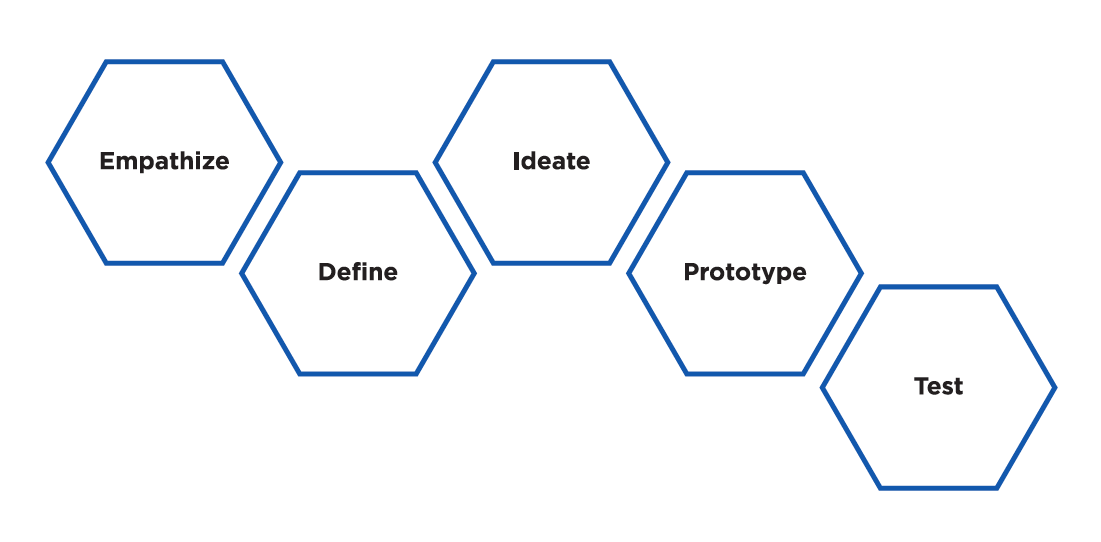Clarifying the Terms of the Discussion
In recent years, many people have been exposed to the notion of design as something beyond graphics—thanks to the rise of global consulting firm IDEO, which popularized a five-step process it terms “design thinking.”

IDEO’s five-step design process.
As IDEO CEO and president Tim Brown explained it in his 2009 book, Change by Design: How Design Thinking Transforms Organizations and Inspires Innovation, he was approached in the 2000s to tackle problems that didn’t seem at all related to traditional notions of design.2 For example, a university wanted help thinking about new learning environments; meanwhile, a health care foundation wanted help restructuring. In other words, he was being asked to do design work beyond the creation of a standalone product or brand. Stanford professor and IDEO founder David Kelly told Tim Brown one day that he found himself using the word “thinking” to explain what they did. “The term ‘design thinking’ stuck,” Brown wrote.3
Interestingly, there is no definitive body of work on the history of design thinking. People disagree about the origin of the term, and whether it is wise—or even possible—to reduce the power of a serious design practice to five easy-to-follow steps. The term was certainly used before the 2000s. Peter Rowe’s book Design Thinking, for example, was published in 1987. And many people cite its origin as tied to the great economist and social scientist Herbert Simon and his book The Sciences of the Artificial, which was published in 1969.4 While Simon does not use the phrase “design thinking,” his work is seminal for articulating a vision of design as a practice supremely useful for grappling with certain kinds of problems beyond those traditionally associated with it.
In this paper, I define design as a practice based on a certain mindset and processes. I suggest avoiding the term “design thinking” since it is too limited and too closely associated to IDEO’s five-step process, which does not encompass all that design has to offer journalists. This was a difficult decision. In recent years, as the curiosity about design and its potential use in newsrooms has grown, many people have used the term “design thinking” to refer to any instance in which design processes are used for problems not traditionally associated with the practice. In the process of researching and writing this paper, however, I was struck by how much skepticism—and outright hostility—the term generates from actual designers and innovators. “Design thinking skates on the surface,” said John Seely Brown. “It caught on because it’s formulaic and thus spreads easily.” According to him, corporations started using design thinking because they’d “lost confidence in their ability to innovate.” Seely Brown continued:
IDEO’s five-step design thinking process served an incredibly useful role because it gave corporations a sense of confidence. I’m not trashing design thinking, but it’s a matter of shallow design versus deep design wherein one pays much closer attention to the inchoate and tactic signals in context.
Jamer Hunt, an associate professor at the Transdisciplinary Design Program at Parsons School of Design, said something similar:
Companies needed help thinking creatively about innovation. And IDEO said, “Look, we have a rational method for this. And you can replicate it yourself.” It worked very well with corporate culture, which is very risk adverse. But I don’t use the term. It reduces design to thinking only. It’s too generic.
Many of the designers I spoke with said they don’t adhere to any particular school and, in fact, find being bound by even a prescribed set of steps confining.